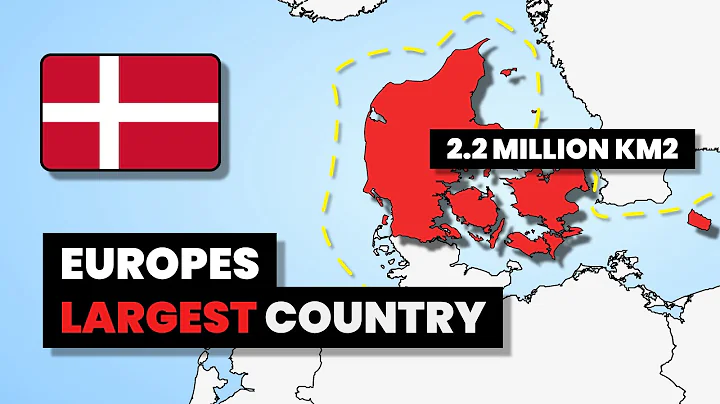Denmark is a small country located in the Nordic region. Its territory includes 406 large and small islands such as Jutland and nearby Funen, Zealand and Bornholm. Regardless of the many Danish islands, all the islands and peninsulas together make up only 43,000 square kilometers. If it weren't for the return of Schleswig and Holstein after World War II, the area of Denmark is only 28,000 square kilometers. Whether in the eyes of the world or in Europe, Denmark is a small country, but in Denmark's own eyes, this is not the case.

In the eyes of Denmark, their country is so big that it surpasses all Western European countries, covering a full 2.2 million square kilometers. This area is second only to Russia in Europe, and it can be called the second largest in Europe. Of course, this area includes not only the mainland of Denmark, but also Denmark's two overseas autonomous territories. Although the two territories are not connected with the Danish mainland, they are actually still under the control of Denmark. This is not only Denmark thinks so, but also recognized by the world.
Two overseas territories, one is very large, the other is very small, the larger is more than fifty times that of Denmark, and the smaller is only 1399 square kilometers. This small territory is called the Faroe Islands. It is located between the Norwegian Sea and the North Atlantic Ocean. It is very close to Norway, Iceland and the United Kingdom, but the distance is not the only factor that determines the ownership of the land. For example, the British-controlled Falkland Islands. It is 13,000 kilometers from the United Kingdom and only 500 kilometers from Argentina, but it belongs to the United Kingdom.

Similarly, although the Faroe Islands is very close to the UK, it belongs to Denmark. The Faroe Islands were originally a Norwegian territory, but in 1380, Denmark and Norway formed the Commonwealth Alliance, in which Denmark occupied the dominant position. Therefore, the whole of Norway, including the Faroe Islands, has naturally become the territory of Denmark. So why is Norway willing to be ruled by Denmark?
This originated from a royal marriage. In 1363, Princess Margaret of Denmark married King Haakon VI of Norway. Margaret was the daughter of Danish King Valdemar. She married to Norway just to strengthen the relationship between Denmark and Norway. Unexpectedly, she seized the actual rule of Norway.

In 1380, King Haakon VI died. He and Margaret’s only son Olaf inherited the Norwegian throne, but Olaf was only 6 years old at the time, so Princess Margaret became the regent in power in Norway. Coincidentally, Olav inherited the extinct Danish throne as a grandson five years ago. So at this time Olaf was actually the king of Denmark and Norway, and Margaret naturally became the regent of the two countries. Margaret is a Danish, and in various policies, she naturally prefers Denmark. During her reign, two territories in Norway have also become Danish territories.

One of the two territories is the Faroe Islands and the other is Greenland. After the partition of Denmark and Norway in 1841, the two territories still belonged to Denmark. This is like a betrothal gift from Norway to Denmark. Although it was separated in the end, it could not be recovered. However, the Faroe Islands are small after all, and Norway will be lost if it is lost, but Greenland has always made Norway feel bad about it.
Greenland, another territory of Denmark, is the world's largest island, covering an area of 2.16 million square kilometers, seven times the size of Norway. After the separation of the two countries, Norway had many territorial disputes with Denmark. It was not until 1933 that the two countries reached an agreement that recognized Denmark's sovereignty over Greenland. Since then, the Faroe Islands and Greenland as Danish land have no disputes and have been recognized by all countries in the world. Therefore, it is understandable that Denmark today thinks that its country has 2.2 million square kilometers. The reason why the international community considers Denmark to be small is simply because Greenland and the Faroe Islands are overseas autonomous territories, and they are not included in the Danish territory.





















